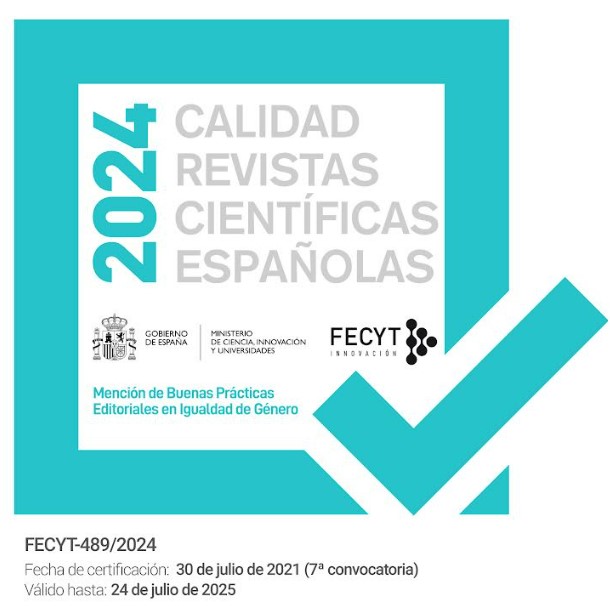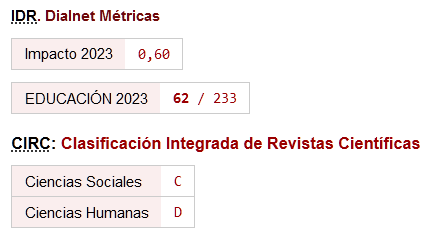Teaching reading to ESL Arab learners: A theoretical review
DOI:
https://doi.org/10.46661/ijeri.4164Keywords:
Situational mode, Jordan, reading skil, Saudi Arabia, theoriesAbstract
El presente documento revisa el estado de la capacidad de comprensión de lectura entre los estudiantes de EFL en Jordania y Arabia Saudita. Hay varios factores que contribuyen a las habilidades lingüísticas deficientes entre los alumnos, según lo informado por varias agencias, así como el Ministerio de Educación. Aquí se intenta proponer un método situacional como una herramienta eficaz para mejorar la experiencia de aprendizaje de los alumnos. Tanto los países, como las otras naciones árabes, han gastado notablemente en la dirección de crear su propia fuerza laboral para que sean autosuficientes, pero el resultado deseado aún está lejos. Este documento permitirá a los investigadores tener una idea de la situación actual y trabajar por el refuerzo de dicho modelo para hacer que el proceso de enseñanza-aprendizaje de EFL sea más gratificante.
Downloads
References
Al Debes, I. M. (2005). The effect of using Reciprocal Teaching and Semantic Mapping Reading Strategies on the development of English Reading Comprehension of upper basic stage students (Unpublished doctoral dissertation). Amman Arab University for Graduate Studies, Amman, Jordan.
Alkhawaldeh, A. (2011). EFL reading comprehension interests among Jordanian high school students and their relationship with gender achievement level and academic stream. European Journal of Social Sciences, 23, 3, 454-465.
Al-Qatawneh, K. (2005). The effect of the generative teaching model on Jordanian secondary school students’ reading comprehension and strategy awareness in English. Unpublished doctoral dissertation, Amman Arab University for Graduate Studies, Amman
Gregory, E. Ruzek, C. A. Hafen, A. Y. Mikami, J. P. Allen & R. C. Pianta. (2017). My Teaching Partner-Secondary: A Video-Based Coaching Model,Theory Into Practice, 56(1), 38-45, DOI: 10.1080/00405841.2016.1260402
Alhabahba, M. M., Pandian, A. & Mahfoodh, O. H. A. (2016). English language education in Jordan: Some recent trends and challenges.Cogent Education, 3: 1156809. http://dx.doi.org/10.1080/2331186X.2016.1156809
Alyousef, H. S. (2005). Teaching reading comprehension to ESL/ EFL learners. The Reading Matrix, 5(2). Retrieved from http://www.readingmatrix.com/articles/alyousef/article.pdf
Asassfeh, S.M. (2015). Prospective EFL teachers: What language learning beliefs do they hold? The Asia-Pacific Education Researcher 24(1), 13-26.
Alzubaidi, E., Aldridge, J. M. & Khine, M. S. (2014). Learning English as a second language at the university level in Jordan: Motivation, self-regulation and learning environment perceptions. Learning Environments Research, 19(1), 133-152. http://dx.doi.org/10.1007/s10984-014-9169-7
Bang, E. S., Muaka, A., Bernbardt, E. B., & Kamil, M. L. (2003). Teaching reading. Geneva, Switzerland: International Academy of Education, International Bureau of Education. Retrieved from: http://www.mona.uwi.edu/cop/sites/default/files/resource/files/prac%20reading.pdf
Bani Abdelrahman, Mahmoud & Bsharah, Muwafaq. (2014). The Effect of Speed Reading Strategies on Developing Reading Comprehension among the 2nd Secondary Students in English Language. English Language Teaching. 7. Doi.10.5539/elt.v7n6p168.
Bernhardt, E., & Kamil, M. (1995). Interpreting relationships between L1 and L2 reading: Consolidating the linguistic threshold and the linguistic interdependence hypotheses. Applied Linguistics, 16, 15-34.
Bhan, K. S., & Gupta, R. (2010). Study Habits and Academic Achievement among the students belonging to scheduled caste and non scheduled caste group. Journal of Applied Research in Education 15(1), 1-9.
Block, E. L. (1992). See how they read: Comprehension monitoring of L1 and L2 readers. TESOL Quarterly, 26, 319-343.
Bransford, J.D., Barclay,J.R., & Franks J.J. (1972). Sentence memory a constructive vs interpretive approach. Cognitive Psychology, 3, 193-209.•British Council. (2015).The relationship between English and employability in the Middle East and North Africa. Retrieved from: https://www.britishcouncil.jo/sites/default/files/en-the_relationship_between_english_employability_in_mena_research.pdf
Broughton, G., Brumfit, C., Flavell, R., Hill, P., & Pincas, A. (1981). Teaching English as a foreign language(2nd ed.). New York, NY: Routledge.
Cain, K., Oakhill, J., & Bryant, P. (2004). Children’s reading comprehension ability: Concurrent prediction by working memory, verbal ability, and component skills. Journal of Educational Psychology, 96(1), 31–42. doi: 10.1037/0022-0663.96.1.31
Calvo, M. G. (2005). Relative contribution of vocabulary knowledge and working memory span to elaborative inferences in reading. Learning and Individual Differences, 15, 53–65. doi:10.1016/j.lindif.2004.07.002
Carrell, P.L. (1983). Some issues in studying the role of schemata or background knowledge in second language comprehension. Reading in a Foreign Language, 1, 81-92.
Cekiso, Madoda & Madikiza, Nophawu. (2014). Reading strategies used by Grade 9 English Second Language learners in a selected school. Reading & Writing. 5. 10.4102/rw.v5i1.42.
Chambers Cantrell, S., Almasi, J. F., Carter, J. C., Rintamaa, M., & Madden, A. (2010). The impact of a strategy-based intervention on the comprehension and strategy use of struggling adolescent readers. Journal of Educational Psychology, 102(2), 257-280.
Chen, S.-L., Shih-Jay, T. & Chu, S.-Y. (2014). Evaluating effectiveness of two types of Chinese remedial materials for low-achieving and disadvantaged second graders. The Asia-Pacific Education Researcher,24(1), 111-123. http://dx.doi.org/10.1007/s40299-013- 0164-z
Clarke, M. (1979). Reading in Spanish and English: Evidence form adult ESL students. Language Learning, 29, 121-150.
Comber, B., & Nixon, H. (2011). Critical reading comprehension in an era of accountability. Australian Educational Researcher, 38, 167-179.
Cromley, Jennifer & E. Snyder-Hogan, Lindsey & Dubas, Ulana. (2010). Reading Comprehension of Scientific Text: A Domain-Specific Test of the Direct and Inferential Mediation Model of Reading Comprehension. Journal of Educational Psychology. 102. 687-700. 10.1037/a0019452
Cummins, J. (1991). Interdependence of first- and second-language proficiency in bilingual children. In E. Bialystok (Ed.), Language processing in bilingual children (pp. 70-89). New York, NY: Cambridge University Press.
Curtain, H., & Dahlberg, C.A. (2004). Languages and children: Making the match. New languages for young learners, grades K–8. Boston, MA: Allyn & Bacon.•David, M. K. (1999). Acquiring communicative competence in the reading. Literacy Across Cultures, 3(1). Retrieved from: http://www2.aasa.ac.jp/~dcdycus/LAC99/MAR99/david399.htm
Dev, P.C. (1997). Intrinsic motivation and academic achievement: What does their relationship imply for the classroom teacher? Remedial and Special Education, 18(1), 12-19.
Edmunds and Bauserman (2006). Reading motivation reported by students. The Reading Teacher 59(5) February 2006•Education First English Proficiency Index. (2014). Fourth edition of the EF English proficiency index. Retrieved from: http://media.ef.com/__/~/media/centralefcom/epi/v4/downloads/fullreports/ef-epi-2014-english.pdf
Flowerday, T., Schraw, G., & Stevens, J. (2004). The role of choice and interest in reader engagement. The Journal of Experimental Education, 72(2), 93-114.
Freahat, N. M., & Smadi, O. M. (2014). Lower-order and higher-order reading questions in secondary and university level EFL textbooks in Jordan. Theory and Practice in Language Studies, 4(9), 1804.
Gambrell, L.B., Palmer, B., & Codling, R.M. (1993). Motivation to read. Washington, DC: U.S. Department of Education, Office of Educational Research and Improvement.
Gernsbacher, M. A. (1990). Language comprehension as structure building. Hillsdale, NJ: Erlbaum.•Graesser, A. C., Singer, M., & Trabasso, T. (1996). Constructing inferences during narrative text comprehension. Psychological Review, 101, 371 – 395.
Gregory, A. E., & Cahill, M. A. (2010). Kindergarteners can do it, too! Comprehension strategies for early readers. The Reading Teacher, 63(6), 515-520. doi:10.1598/RT.63.6.9
Guthrie, J. T. & Klauda, S. L. (2014). Effects of classroom practices on reading comprehension, engagement, and motivations for adolescents. Reading Research Quarterly, 49(4), 387-416. http://dx.doi.org/10.1002/rrq.81•Hafen,
Christopher & Hamre, Bridget & P. Allen, Joseph & Bell, Courtney & Gitomer, Drew & C. Pianta, Robert. (2014). Teaching Through Interactions in Secondary School Classrooms. The Journal of Early Adolescence. 35. 10.1177/0272431614537117.
Hara, A. & Tappe, H., 2016, Inference generation and text comprehension in bilingual children: A case study, Literator, 37(2), a1287. http://dx.doi.org/10.4102/lit. v37i2.1287
Hatami, S., & Tavakoli, M. (2012). The role of depth versus breadth of vocabulary knowledge in success and ease in L2 lexical inferencing. TESL Canada Journal, 30(1), 1-22.
Heppt, B., Haag, N., Böhme, K., & Stanat, P. (2015). The role of academic-language features for reading comprehension of language-minority students and students from low-SES families. Reading Research Quarterly, 50, 61–82.
Hidi, S. (2001). Interest, reading, and learning: Theoretical and practical considerations. Educational Psychology Review, 13, 191-209.
Holderbaum C. S., Salles J.F. (2011). Semantic priming effect in a lexical decision task comparing third graders and college students in two different stimulus onset asynchrony.Span J Psychol. 14, 589–599.
Jordanian Teachers Syndicate (2015). Shocking results in Tawjihi examination results. http://jts.org.jo/
Keenan, J. M., Potts, G. R., Golding, J. M., & Jennings, T. M. (1990). Which elaborative inferences are drawn during reading? A question of methodologies. In D. A. Balota, G. B. Flores d'Arcais, & K. Rayner (Eds.),Comprehension processes in reading (pp. 377-402). Hillsdale, NJ, US: Lawrence Erlbaum Associates, Inc.
Kendeou P, Smith E, O’Brien E. (2013). Updating during reading comprehension: Why causality matters. Journal of Experimental Psychology: Learning, Memory, and Cognition. 39, 854–865.•Kintsch, W. (1998). Comprehension: A paradigm for cognition. New York: Cambridge University Press.
Kintsch, W., & Rawson, K. A. (2005). Comprehension. In M. J. Snowling & C. Hulme (Eds.), The science of reading: A handbook (pp. 209–26). Oxford: Blackwell. •Konaré, B. (1994). Reading comprehension in large classes: A practical classroom procedure. English Teaching Forum. Retrieved from:http://citeseerx.ist.psu.edu/viewdoc/download?doi=10.1.1.101.7161&rep=rep1&type=pdf
Krashen, S. (1981). Second language acquisition and second language learning. New York: Pergamon Press.•León, J. A. (2004). Un nuevo enfoque de la competencia lectora basado en diferentes tipos de comprensión [A new approach to reading skills based on different kinds of comprehension]. Seminario de primavera 2004. Fundación Santillana, 39-50.
Long, D. L., & Chong, J. L. (2001). Comprehension skill and global coherence: A paradoxical picture of poor comprehenders’ abilities. Journalof Experimental Psychology: Learning, Memory, and Cognition, 27, 1424–1429.
Mahfoudhi, Abdessatar & , Everatt & , Elbeheri. (2011). Introduction to the Special Issue of Reading and Writing: "Litearcy in Arabic". Reading & Writing. 24, 1011-1018.
Maier, Johanna & Richter, Tobias. (2014). Fostering multiple text comprehension: How metacognitive strategies and motivation moderate the text-belief consistency effect. Metacognition and Learning, 9, 51-74. 10.1007/s11409-013-9111-x.
Malkawi, K. (2014). Low Tawjihi pass rate suggests fewer applications to private universities.Jordan Times. Retrieved from: http://jordantimes.com/low-tawjihi-pass-rate-suggests-fewer-applications-to-private-universities
Matsuki, K., Chow, T., Hare, M., Elman, J. L., Scheepers, C., & McRae, K. (2011). Event-based plausibility immediately influences on-line language comprehension.Journal of Experimental Psychology: Learning, Memory, and Cognition, 37(4), 913-934.
Mckay A., Davis C., Savage G., Castles A. (2008). Semantic involvement in reading aloud:evidence from a nonword training study. J. Exp. Psychol. Learn. Mem Cogn., 34, 1495 – 1517.
McNamara, D. S. (2001). Reading both high-coherence and low coherence texts: Effects of text sequence and prior knowledge. Canadian Journal of Experimental Psychology, 55, 51-62.
McNeil, L. (2011). Investigating the contributions of background knowledge and reading comprehension strategies to L2 reading comprehension: An exploratory study. Reading and Writing, 83, 883-902.
Madikiza, N., (2011). An investigation into reading strategies employed by Grade 9 learners at James Kobi JSS: Implications for teaching reading, unpublished MEd dissertation, Walter Sisulu University, Mthatha.
Menken, K., Kleyn, T., & Chae, N. (2012). Spotlight on “long-term English language Learners:” Characteristics and prior schooling experiences of an invisible population. International Multilingual Research Journal, 6(2), 121-142.
Ministry of Education. (2014).Educational Statistical Report. Amman: MoE. Retrieved from: http://www.moe.gov.jo/MenuDetails.aspx?MenuID=29•Morrow, L.M. (1996). Motivating reading and writing in diverse classrooms: Social and physical contexts in a literature-based program (NCTE Research Report No. 28). Urbana, IL: National Council of Teachers of English.
Mullis, I. V., Martin, M. O., Foy, P., & Arora, A. (2012).Trends in international mathematics and science study (timss) 2011 international results in mathematics. Boston, MA: International Association for the Evaluation of Educational Achievement.
Nation, K. (2005). ‘Children’s reading comprehension difficulties’, in The Science of Reading: A Handbook, (Eds.) M. J. Snowing and C. Hulme, pp. 248–266, Blackwell, Oxford.•Nation, K. (2009). Form-meaning links in the development of visual word recognition. Phil. Trans. R. Soc. B. 364, 3665 – 3674.
Nation, K., & Snowling, M. J. (1999). Developmental differences in sensitivity to semantic relations among good and poor comprehenders: evidence from semantic priming. Cognition, 70, B1–B13.
Nation, K., Adams, J. W., Bowyer-Crane, C. A., & Snowling, M. J. (1999). Working memory deficits in poor comprehenders reflect underlyinglanguage impairments. Journal of Experimental Child Psychology, 73, 139–158.
National Reading Panel (2000) Report of the National Reading Panel: Reports of the subgroups, National Institute of Child Health and Human Development Clearing House, Washington, DC.
National Reading Panel. (2000). Report of the National Reading Panel. Teaching children to read: An evidence-based assessment of the scientific research literature on reading and its implications for reading instruction (NIH Publication No. 00- 4769). Washington, D.C.: U.S. Government Printing Office.
Norris, R. W. (1994). Getting students more personally involved: Analternative to the Yakudoku-and Lecture-dominated methods of teaching literature and reading.Fukuoka Women’s Junior College Studies, 48, 25-38. Retrieved from: http://www2.gol.com/users/norris/articles/read1.html
Oakhill, J. V. (1984). Inferential and memory skills in children’s comprehension of stories. British Journal of Educational Psychology, 54, 31–39.
Olsen, L. (2010). Reparable harm: Fulfilling the unkept promise of educational opportunity for California’s long term English learners (2nd ed.). Long Beach, CA: Californians Together. Retrieved from: http://www.ctdev.changeagentsproductions.org/wp-content/uploads/2015/01/ReparableHarm2ndedition.pdf•Ouellette, G. P. (2006). What's meaning got to do with it: The role of vocabulary in word reading and reading comprehension.Journal of Educational Psychology, 98(3), 554-566.
Pearson English. (2011). Companies in Middle East region ranked lowest for business English competency. Retrieved from www.globalenglish.com/company/press/releases/466
Perfetti, C. A. (1985). Reading ability. Oxford, England: Oxford University Press.
Perfetti, C. A. (1994). Psycholinguistics and reading ability. In M. A. Gernsbacher (Ed.), Handbook of psycholinguistics (pp. 849–894). San Diego, CA: Academic Press.
Perfetti, C. A., Landi, N. and Oakhill, J. (2005) ‘The acquisition of reading comprehension skill’, in The Science of Reading: A Handbook, eds M. J. Snowing and C. Hulme, pp. 227–247, Blackwell, Oxford.
Perfetti, C. A., Marron, M. A., & Foltz, P. W. (1996). Sources of comprehension failure: Theoretical perspectives and case studies. In C. Cornoldi & J. V. Oakhill (Eds.), Reading comprehension difficulties: Processesand remediation (pp. 137–165). Mahwah, NJ: Erlbaum
Pike, M. M., Barnes, M. A., & Barron, R. W. (2010). The role of illustrations in children's inferential comprehension. Journal of Experimental Child Psychology, 105, 243–255 •PISA.(2012). Jordan: Student performance. OECD.Retrieved from:http://gpseducation.oecd.org/CountryProfile?primaryCountry=JOR&treshold=10&topic=PI
Porter, K. (2010). Pre-reading strategies, viewed 18 October 2012, from http://www. departments.webar.edu/teacher/reading/pre-reading.html
Prater, D. and Terry, C. (1988). Effects of mapping strategies on reading comprehension and writing performance. Reading Psychology: An International Quarterly, 9, 101-120.
Pretorius, E.J. (2002). Reading and applied linguistics: A deafening silence?, Southern African Linguistics and Applied Language Studies 20, 91–103. http://dx.doi. org/10.2989/16073610209486300
Rai, M. K., Loschky, L. C., Harris, R. J., Peck, N. R., & Cook, L. G. (2011). Effects of stress and working memory capacity on foreign language readers’ inferential processing during comprehension. Language Learning, 61, 187–218. doi:10.1111/j.1467-9922.2010.00592.x
Rixon, S. (2013). British Council Survey of Policy and Practice in Primary English Language Teaching Worldwide, London: British Council.
Rupley, W. H., & Nichols, W. D. (2005). Vocabulary instruction for the struggling readers. Reading Writing Quarterly, 21(3), 239-260.•Rothman, J., & Halloran, B. (2013). Formal Linguistic Approaches to L3/Ln Acquisition: A Focus on Morphosyntactic Transfer in Adult Multilingualism.Annual Review of Applied Linguistics, 33, 51-67.
doi:10.1017/S0267190513000032
Scott, S. E. (2009). Knowledge for teaching reading comprehension: Mapping the terrain (Doctoral dissertation, The University of Michigan). Retrieved from: http://deepblue.lib.umich.edu/bitstream/handle/2027.42/62201/sarascot_1.pdf
Sheng, H. J. (2000). A cognitive model for teaching reading comprehension. English Teaching Forum,38(4). Retrieved from: http://202.194.48.102/englishonline/jxyj/xslw/E-Zine/T7ya8teaching%20reading.asp?
Singh, Y. G. (2011). Academic Achievement and Study Habits of Higher Secondary Students. International Referred Research Journal, 3 (27), 2.
Singhal, M. (1998). A comparison of L1 and L2 reading: Cultural differences and schema. The Internet TESL Journal,4(10). Retrieved from http://iteslj.org/Articles/Singhal-ReadingL1L2. html
Staub, A. (2015). Reading Sentences: Syntactic Parsing and Semantic Interpretation, In Pollatsek, A. & Treiman, R. (eds.) The Oxford Handbook of Reading (202-216), New York: Oxford University Press.
Syed, Z. (2003). The sociocultural context of English language teaching in the Gulf.TESOL Quarterly, 37, 337–341.10.2307/3588508•USAID (2008). Evaluation of the Jordan education initiative: Report: Task 1. In D. Light & C. Rockman (Eds.), Evaluation of the Jordan education initiative: The emerging paradigm of teaching and learning in Discovery Schools. Washington, DC: Education Development Center.
Uso-Juan, E., & Martinez-Flor, A. (2006). Towards acquiring communicative competence through reading. In E. Uso-Juan, & A. Martinez-Flor (Eds.), Current trends in the development and teaching of the four language skills (pp. 261-279). Berlin: Mouton de Gruyter.
Porter, K. (2010). Pre-reading strategies, viewed 18 October 2012, from http://www. departments.webar.edu/teacher/reading/pre-reading.html
Prater, D. and Terry, C. (1988). Effects of mapping strategies on reading comprehension and writing performance. Reading Psychology: An International Quarterly, 9, 101-120.
Pretorius, E.J. (2002). Reading and applied linguistics: A deafening silence?, Southern African Linguistics and Applied Language Studies 20, 91–103. http://dx.doi. org/10.2989/16073610209486300
Rai, M. K., Loschky, L. C., Harris, R. J., Peck, N. R., & Cook, L. G. (2011). Effects of stress and working memory capacity on foreign language readers’ inferential processing during comprehension. Language Learning, 61, 187–218. doi:10.1111/j.1467-9922.2010.00592.x
Rixon, S. (2013). British Council Survey of Policy and Practice in Primary English Language Teaching Worldwide, London: British Council.
Rupley, W. H., & Nichols, W. D. (2005). Vocabulary instruction for the struggling readers. Reading Writing Quarterly, 21(3), 239-260.
Rothman, J., & Halloran, B. (2013). Formal Linguistic Approaches to L3/Ln Acquisition: A Focus on Morphosyntactic Transfer in Adult Multilingualism.Annual Review of Applied Linguistics, 33, 51-67. doi:10.1017/S0267190513000032
Scott, S. E. (2009). Knowledge for teaching reading comprehension: Mapping the terrain (Doctoral dissertation, The University of Michigan). Retrieved from: http://deepblue.lib.umich.edu/bitstream/handle/2027.42/62201/sarascot_1.pdf
Sheng, H. J. (2000). A cognitive model for teaching reading comprehension. English Teaching Forum,38(4). Retrieved from: http://202.194.48.102/englishonline/jxyj/xslw/E-Zine/T7ya8teaching%20reading.asp?
Singh, Y. G. (2011). Academic Achievement and Study Habits of Higher Secondary Students. International Referred Research Journal, 3 (27), 2.
Singhal, M. (1998). A comparison of L1 and L2 reading: Cultural differences and schema. The Internet TESL Journal,4(10). Retrieved from http://iteslj.org/Articles/Singhal-ReadingL1L2. html
Staub, A. (2015). Reading Sentences: Syntactic Parsing and Semantic Interpretation, In Pollatsek, A. & Treiman, R. (eds.) The Oxford Handbook of Reading (202-216), New York: Oxford University Press.
Syed, Z. (2003). The sociocultural context of English language teaching in the Gulf.TESOL Quarterly, 37, 337–341.10.2307/3588508
USAID (2008). Evaluation of the Jordan education initiative: Report: Task 1. In D. Light & C. Rockman (Eds.), Evaluation of the Jordan education initiative: The emerging paradigm of teaching and learning in Discovery Schools. Washington, DC: Education Development Center.
Uso-Juan, E., & Martinez-Flor, A. (2006). Towards acquiring communicative competence through reading. In E. Uso-Juan, & A. Martinez-Flor (Eds.), Current trends in the development and teaching of the four language skills (pp. 261-279). Berlin: Mouton de Gruyter.
Porter, K. (2010). Pre-reading strategies, viewed 18 October 2012, from http://www. departments.webar.edu/teacher/reading/pre-reading.html
Prater, D. and Terry, C. (1988). Effects of mapping strategies on reading comprehension and writing performance. Reading Psychology: An International Quarterly, 9, 101-120.
Pretorius, E.J. (2002). Reading and applied linguistics: A deafening silence?, Southern African Linguistics and Applied Language Studies 20, 91–103. http://dx.doi. org/10.2989/16073610209486300•Rai, M. K., Loschky, L. C.,
Harris, R. J., Peck, N. R., & Cook, L. G. (2011). Effects of stress and working memory capacity on foreign language readers’ inferential processing during comprehension. Language Learning, 61, 187–218. doi:10.1111/j.1467-9922.2010.00592.x
Rixon, S. (2013). British Council Survey of Policy and Practice in Primary English Language Teaching Worldwide, London: British Council.
Rupley, W. H., & Nichols, W. D. (2005). Vocabulary instruction for the struggling readers. Reading Writing Quarterly, 21(3), 239-260.
Rothman, J., & Halloran, B. (2013). Formal Linguistic Approaches to L3/Ln Acquisition: A Focus on Morphosyntactic Transfer in Adult Multilingualism.Annual Review of Applied Linguistics, 33, 51-67. doi:10.1017/S0267190513000032
Scott, S. E. (2009). Knowledge for teaching reading comprehension: Mapping the terrain (Doctoral dissertation, The University of Michigan). Retrieved from: http://deepblue.lib.umich.edu/bitstream/handle/2027.42/62201/sarascot_1.pdf
Sheng, H. J. (2000). A cognitive model for teaching reading comprehension. English Teaching Forum,38(4). Retrieved from: http://202.194.48.102/englishonline/jxyj/xslw/E-Zine/T7ya8teaching%20reading.asp?
Singh, Y. G. (2011). Academic Achievement and Study Habits of Higher Secondary Students. International Referred Research Journal, 3 (27), 2.
Singhal, M. (1998). A comparison of L1 and L2 reading: Cultural differences and schema. The Internet TESL Journal,4(10). Retrieved from http://iteslj.org/Articles/Singhal-ReadingL1L2. html
Staub, A. (2015). Reading Sentences: Syntactic Parsing and Semantic Interpretation, In Pollatsek, A. & Treiman, R. (eds.) The Oxford Handbook of Reading (202-216), New York: Oxford University Press.
Syed, Z. (2003). The sociocultural context of English language teaching in the Gulf.TESOL Quarterly, 37, 337–341.10.2307/3588508
USAID (2008). Evaluation of the Jordan education initiative: Report: Task 1. In D. Light & C. Rockman (Eds.), Evaluation of the Jordan education initiative: The emerging paradigm of teaching and learning in Discovery Schools. Washington, DC: Education Development Center.
Uso-Juan, E., & Martinez-Flor, A. (2006). Towards acquiring communicative competence through reading. In E. Uso-Juan, & A. Martinez-Flor (Eds.), Current trends in the development and teaching of the four language skills (pp. 261-279). Berlin: Mouton de Gruyter.
Porter, K. (2010). Pre-reading strategies, viewed 18 October 2012, from http://www. departments.webar.edu/teacher/reading/pre-reading.html
Prater, D. and Terry, C. (1988). Effects of mapping strategies on reading comprehension and writing performance. Reading Psychology: An International Quarterly, 9, 101-120.
Pretorius, E.J. (2002). Reading and applied linguistics: A deafening silence?, Southern African Linguistics and Applied Language Studies 20, 91–103. http://dx.doi. org/10.2989/16073610209486300
Rai, M. K., Loschky, L. C., Harris, R. J., Peck, N. R., & Cook, L. G. (2011). Effects of stress and working memory capacity on foreign language readers’ inferential processing during comprehension. Language Learning, 61, 187–218. doi:10.1111/j.1467-9922.2010.00592.x
Rixon, S. (2013). British Council Survey of Policy and Practice in Primary English Language Teaching Worldwide, London: British Council.
Rupley, W. H., & Nichols, W. D. (2005). Vocabulary instruction for the struggling readers. Reading Writing Quarterly, 21(3), 239-260.
Rothman, J., & Halloran, B. (2013). Formal Linguistic Approaches to L3/Ln Acquisition: A Focus on Morphosyntactic Transfer in Adult Multilingualism.Annual Review of Applied Linguistics, 33, 51-67. doi:10.1017/S0267190513000032
Scott, S. E. (2009). Knowledge for teaching reading comprehension: Mapping the terrain (Doctoral dissertation, The University of Michigan). Retrieved from: http://deepblue.lib.umich.edu/bitstream/handle/2027.42/62201/sarascot_1.pdf
Sheng, H. J. (2000). A cognitive model for teaching reading comprehension. English Teaching Forum,38(4). Retrieved from: http://202.194.48.102/englishonline/jxyj/xslw/E-Zine/T7ya8teaching%20reading.asp?
Singh, Y. G. (2011). Academic Achievement and Study Habits of Higher Secondary Students. International Referred Research Journal, 3 (27), 2.
Singhal, M. (1998). A comparison of L1 and L2 reading: Cultural differences and schema. The Internet TESL Journal,4(10). Retrieved from http://iteslj.org/Articles/Singhal-ReadingL1L2. html
Van Kleeck, A. (2008). Providing preschool foundations for later reading comprehension: The importance of and ideas for targeting inferencing in book-sharing interventions. Psychology in the Schools. 45 (6), 627 - 643.
Vu, H., Kellas, G., Petersen, E., & Metcalf, K. (2003). Situationevoking stimuli, domain of reference, and the incremental interpretation of lexical ambiguity. Memory & Cognition, 31, 1302-1315.•Wessels, M. (2007). Practical guide to facilitating language learning, (2nd edn.), Oxford University Press: South Africa.•Wooly, G., (2011). Reading comprehension: Assisting children with learnnig difficulties. Brisbane, Australia: Springer. Retrieved from: http://link.springer.com/chapter/10.1007%2F978-94-007-1174-7_2#page-1
Yoshikawa, H., Kabay, S. (2015). The Evidence Base on Early Childhood Care and Education in Global Contexts, Education for All 2000-2015: achievements and challenges (UNESCO), ED/EFA/MRT/2015/PI/28.
Zwaan, R. A., & Brown, C. M. (1996). The influence of language proficiency and comprehension skill on situation model construction. Discourse Processes, 21, 289-327.•Zwaan, R. A., & Radvansky, G. A. (1998). Situation models in language comprehension and memory. Psychological Bulletin, 123, 162–85.
Downloads
Published
How to Cite
Issue
Section
License
Copyright (c) 2019 IJERI: International Journal of Educational Research and Innovation

This work is licensed under a Creative Commons Attribution-NonCommercial-NoDerivatives 4.0 International License.












